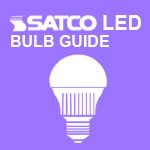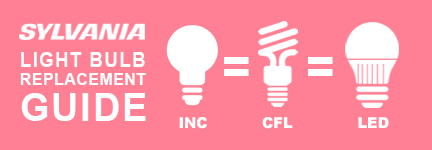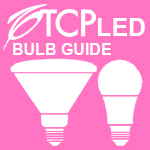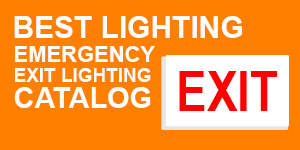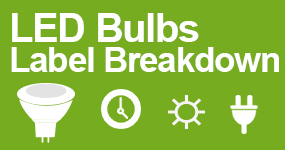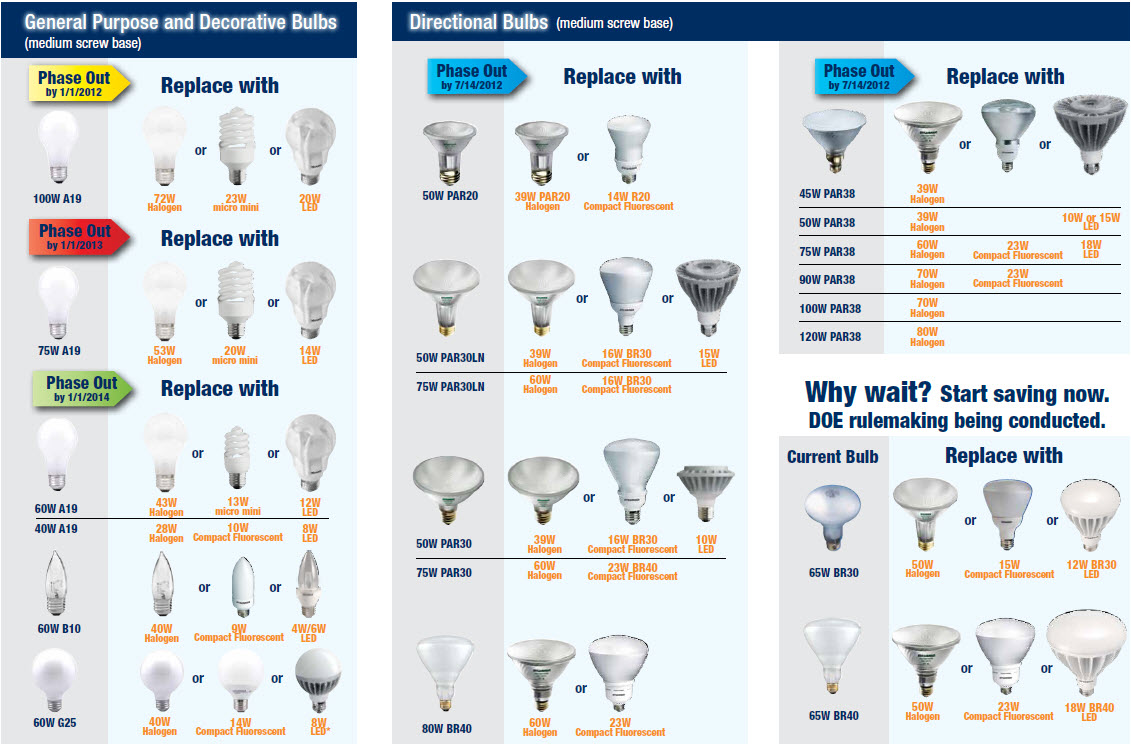Bulb Reference Guide
Understanding the LED Lighting Facts Label - Video & Infographic
Light Bulbs, also known as lamps in the industry, come in a vast variety of sizes, shapes, and temperatures (colors) to allow for an array of fixtures, which need different bases and other considerations. Superior Lighting stocks thousands of bulbs, including incandescent and halogen bulbs, CFL, Linear, and HID fluorescent bulbs as well as the latest technology with LED bulbs. Whether you're using identical bulbs to replace those that have burned out or you're upgrading to something more efficient or perhaps with a higher CRI, we're here to guide you through the decision process with bulbs, fixtures, and lighting. Is a coveted floor lamp or chandelier fitted with a base you’ve never seen before? Or calls for a certain filament to get just right the glow? Read on if you’ve ever been confused on the right bulb shape for a certain project.
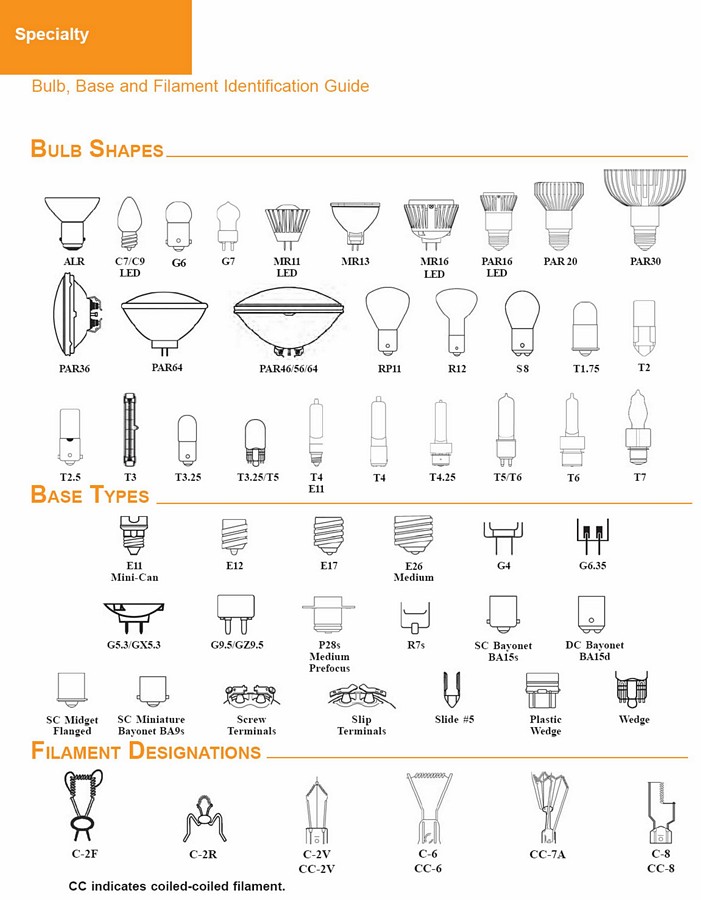
Bulb Size Reference Guide
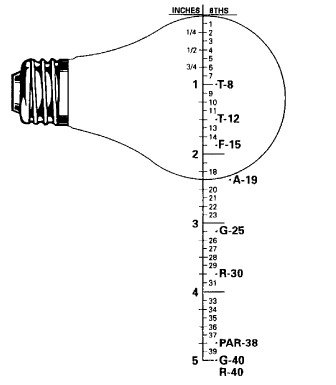
How to use the chart: The code number of a bulb consists of a letter or letters followed by a number. The letter indicates the shape of the bulb and the number relates to the diameter of the bulb in eighths of an inch. The most commonly used household bulb is the A-19. The bulb is "A" type and the diameter would be 2 3/8" A 120BR40 is a 120-watt reflector 5" in diameter.
|
Kelvin degree lamps used in task lighting are as follows:
|
Kelvin Associated Effects & Moods - Appropriate Applications
2700° Friendly, personal, intimate Homes, libraries, restaurants
3000° Soft, warm pleasing light - Homes, hotel rooms and lobbies, restaurants, retail stores
3500° Friendly, inviting, non-threatening Executive offices, public reception areas, supermarkets
4100° Neat, clean, efficient Office, classrooms, mass merchandisers, showrooms
5000° Bright, alert - Graphic industry, hospitals
6500° Bright, cool - Jewelry stores, beauty salons, galleries, museums, printing

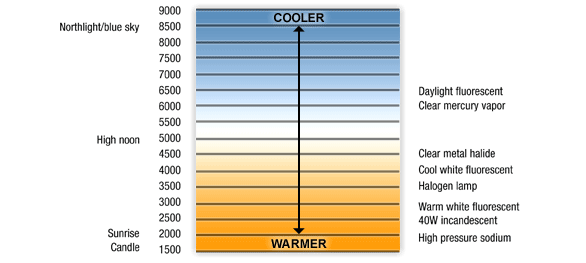

Color Rendering Index
There are two standard measurements for the color characteristics of light: "color rendering index" (CRI), a term used to describe the extent to which an artificial light source is able to render the true color of objects as seen by natural outdoor sunlight which has a CRI of 100, and "color temperature", which expresses the color appearance of the light itself.
Color Rendering Index: Incandescent is used as the base reference of 100 CRI. Compact fluorescent lamps are graded at 82-86 CRI, which is considered high quality color rendering. CRI is a more important consideration for retail lighting design than it is for office lighting.
Any CRI rating of 80 or above is considered high and indicates that the source has good color properties. Incandescent lamps and daylight have a CRI of 100, the highest possible CRI. The higher the CRI of the light source, the "truer" it renders color. Sources with CRI values less than 50 are generally regarded as rendering colors poorly, that is, colors may appear unnatural.
So how important is CRI to you? Depending on the project or use of your bulbs, it can be equally important as the look. By comparing the appearance of a colored object under an artificial light source to its appearance under an incandescent light already set at 100 CRI. The higher the CRI value, the better the light source is at interpreting colors accurately.
|
|
 |
|
Color Temperature: Refers to the way color groups are perceived – the psychological impact of lighting. Color temperature is how cool or warm the light source appears. The color temperature of a light source is a numerical measurement of its color appearance. But why is color temperature measured in degrees Kelvin (K)? This temperature is based on the principle that any object will emit light if it is heated to a high enough temperature and that the color of that light will shift in a predictable manner as the temperature is increased. This system is based on the color changes of a black metal as it is heated from a cold black to a white hot state. Colors and light go from red, orange, and yellow (warm - incandescent) to blue and white (natural daylight). So if you’ve ever asked what color is daylight, imagine how the sun, for example, rises at approximately 1800 Kelvin and changes from red to orange to yellow and to white as it rises to over 5000 Kelvin at high noon. It then goes back down the scale as it sets.
|
Satco Light Bulb - Product Guide
Founded in 1966, Satco is well known as the premier supplier of a variety of lighting products. The SATCO brand of light bulbs, electrical accessories, lighting hardware and glassware are primarily sold through its 8,000 retail lighting showrooms and electrical distributors, like Superior Lighting.
The Satco organization is privately owned and operated with warehouse distribution and sales locations all over the U.S. and Puerto Rico. Under the Satco brand, the company’s product categories include incandescent, halogen, fluorescent, HID, and LED lamps as well as hundreds of styles of builder-oriented lighting fixtures, track lighting and lamps.
Search Satco Product's catalog of light bulbs and LEDs. All varieties of light bulbs from energy efficient LEDs to incandescent light bulbs and their uses are free to explore in this engaging and extensive catalog.>>> Satco Lamp Specification Guide
>>> Satco LED Bulb Guide
>>> Shop Satco Light Bulbs
Sylvania Products Bulb Guide
Sylvania is a worldwide leader in innovative lighting products as well as intelligent and connected lighting solutions (Smart Home). Sylvania emerges from the classical lighting business of OSRAM and combines traditional general illumination with modern, forward-looking lighting technology.
In North America, the Sylvania product brand leadership is a result of a proud legacy of over 100 years of lighting experience and paves the way for future success. Sylvania believes their ideas can make a difference in every person's life and that their products reflect a commitment to making our world more comfortable, more productive and more imaginative.
Sylvania Product's catalog of light bulbs and LEDs is an informative product guide of the lamps and available from Sylvania and distributed by Superior Lighting.
Sylvania Light Bulb Catalog
Sylvania LED Catalog
>>> Shop Light Bulbs On Sale
Light Bulbs Replacement Guide (Incandescent to CFL or LED)
Sylvania Phase-Out Light Bulbs Replacement Guide (Incandescent to CFL or LED)
Sylvania LED retrofitting technology provides energy savings, long product lifespan and helps to meet sustainability goals perfect for your phase-out goals. They are reliable, high-quality replacements for light sources in both commercial and residential applications. Sylvania has warmer 2500K products specifically designed for hospitality applications as well as standard 2700K and 3000K color temperatures.
Here you have a simple light bulb replacement guide showing you how easy transitioning from your Incandescent bulbs to LEDs can be. All LED can be screwed in like traditional bulbs.
- If you are using a 60-watt incandescent or a 13 watt compact fluorescent (CFL), you can switch to a 10 watt LED bulb.
- If you are using a small 50-watt R20 flood bulb commonly found in track, recess, or landscape lighting, you can switch to an 8 watt LED R20 bulb.
- 50-watt low voltage, MR16 bulbs normally only found in track lighting can be converted to 7 watt MR 16 LED bulb; these bulbs are pushed in and generate much less heat.
- 65- or 75-watt large BR30 flood bulbs commonly used in overhead recess lights can be changed to a 12- or 14-watt LED flood bulb. We have both indoor and outdoor varieties available that can last up to 25,000 hours or a 22-year lifespan if used 3 hours a day.
TCP LED Elite Series Catalog
TCP A-Shape LED Bulbs Spec Sheet
TCP MR16 LED Bulbs Spec Sheet
TCP BR & PAR LED Reflectors Bulbs Spec Sheet
TCP CFL TruStart Light Bulbs Spec Sheet
TCP CFL TruDim Light Bulbs Spec Sheet
TCP CFL InstaBright & Armor Coat Light Bulbs Spec Sheet
Progress Lighting Residential Fixtures
Progress Lighting has been offering high quality residential and commercial lighting solutions for over a century. They pride themselves on great lighting technology, leadership and engineering with products that deliver aesthetic appeal, stellar performance, easy installation and value.
>>> Shop LED Lighting Fixtures
LED Label Break Down
Understanding the LED Lighting Facts Label - Video & Infographic
Understanding LEDs. How to read a lighting facts’ label and learn a little bit more about light bulbs and LEDs.
- Brightness indicates how much light the bulb emits and is measured in lumens. More lumens equals more light. As a frame of reference, 800 lumens equivalent to a traditional 60 watt incandescent light bulb.
- Energy Cost, which indicates approximately how much it will cost to run this bulb on an annual basis. This figure varies based on the wattage, usage hours per day, and price you pay per kilowatt-hour of electricity from your local utility.
- Average Life is the bulb’s expected life in hours. Good LEDs should be expected to last 25000 or about 22 years if only used 3 hours a day.
- Light appearance is the color of the light and is really a personal preference. It does not indicate brightness, but rather what color the light will actually appear to be. See above for the Kelvin scale explanation and examples of these colors.
- Energy Used is how many watts this light bulb uses. The higher the watts, the less efficient the bulb and the more it will cost to use. Remember, wattage only indicates how much energy is being used. You need to check your lumens to see how much light the bulb actually puts out.
